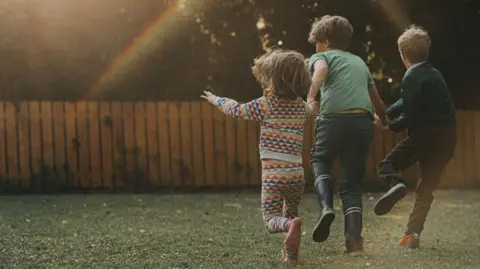 .
.The two-child limit means many low-income families do not receive further benefits when they have a third or subsequent child.
It has been the subject of intense political debate and speculation, with Chancellor Rachel Reeves hinting at changes in the Budget.
So how does the system work and what might happen?
What is the two-child cap and how many people does it affect?
The policy, introduced by Conservative chancellor George Osborne, means parents can only claim universal credit or tax credits for their first two children.
It applies to third or subsequent children born after 6 April 2017.
A total of 1.6 million children are living in larger families who cannot claim these means-tested benefits as a result.
If the cap had not been introduced, affected families could have received an average of £4,400 in benefit entitlements a year, roughly a tenth of their total disposable income, according to the Institute for Fiscal Studies (IFS).
The think tank estimates the policy will ultimately save the Treasury about £3.6bn a year.
So it has nothing to do with child benefit?
Correct. There is often a misconception that the two-child limit affects the payment of child benefit, because it is called the two-child benefit cap.
So, take a breath between “two-child” and “benefit”.
This policy is specifically directed at universal credit and tax credits, not child benefit.
How does the cap work?
If you receive universal credit or tax credits then, generally, you won’t be paid any additional benefit if you have or had a third or subsequent child born after 6 April 2017.
If you have, for example, four children born before that date, then you will still receive the additional payments. That relates to children aged under 16, or young people aged under 20 who are in full-time education or training.
There are other exceptions.
If a parent, or parents, have one child, and the next are twins or triplets, then a claim can be made for all these children.
Claims can also be made if children are born after rape, or from a coercive relationship. Payments can also go to children who are adopted, in your care rather than local authority care, or are a child of your child.
Why have some criticised the cap?
More than 100 charities have written to the chancellor to call for the two-child limit to be scrapped.
A host of backbench Labour MPs want the chancellor to scrap it, arguing that it would bring hundreds of thousands of children out of poverty.
However, in doing so, a gap would be created in savings for the Treasury. The money would probably need to be found in cuts elsewhere, through tax rises, or from increases in government borrowing.
The Conservatives support the cap, saying it makes the system fairer, and means parents on benefits face the same financial choices as parents who fund themselves solely through work.
What could change in the Budget?
The chancellor hinted at changes when she told the BBC it was not right that children in bigger families were “penalised” through “no fault of their own”.
She has options beyond simply scrapping the policy entirely.
The benefit could be given to all families irrespective of the number of children, but at a lower level.
The chancellor could also offer partial payments, potentially getting smaller for each additional child to reflect that these children might use the same buggy as their siblings or hand-me-down clothes.
She could also cap the benefit payments at a higher number of children.
